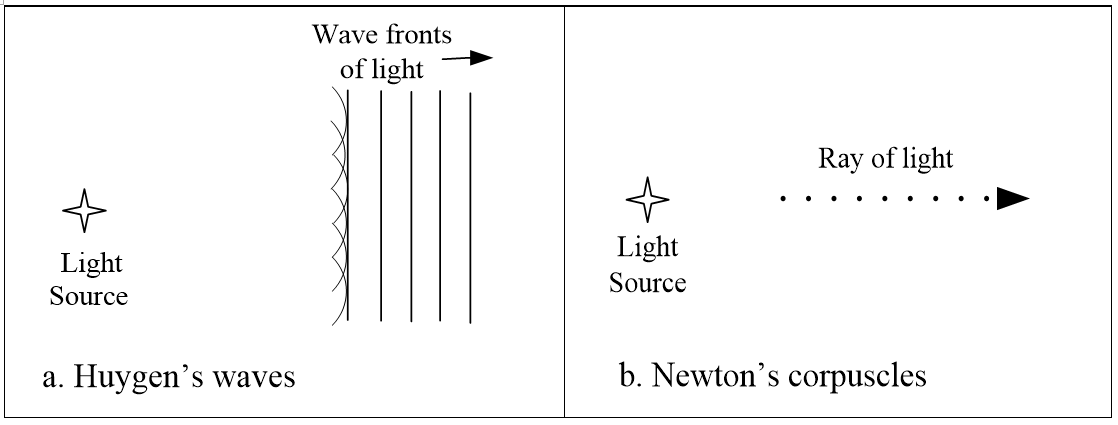
The question of whether light is a particle or a wave has a long history. In the seventeenth century, Huygens observed that light beams at right angles pass through each other like waves, while arrow-like particles would collide. He concluded that light is a wavefront spreading in all directions, with each point the origin of a new little wavelet. The wavelets behind the wavefront interfere, as the trough of one cancels the crest of another, so the result is a forward moving wavefront that acts like a ray of light (Figure 3.1a). Huygen’s Principle, that each point of the light wavefront is a new wavelet source, explained reflection, refraction, and diffraction, so light is a wave.
In contrast, Newton observed that light travels in straight lines, rather than bending round corners as sound does when someone is talking in the next room, so he concluded that light consisted of corpuscles that traveled in straight lines (Figure 3.1b), as in the optics of the day. His model explained only reflection and refraction but he carried the day, so light was then seen as particles.
So it remained until two hundred years later, Maxwell used Faraday’s field idea to write down the equations of light as an electro-magnetic wave, based on a mechanical model of rotating vortexes. The equations worked and so were accepted, and that seemed to confirm that light was a wave.
However, waves need a medium, so light should travel by means of an ether that permeated space. The speed of light should then vary relative to that ether, but the Michelson-Morley experiment showed that it didn’t. Light couldn’t travel in a physical ether, so it couldn’t be a wave. Then Einstein showed, from the photo-electric effect, that light comes in particle-like packets, called photons. The evidence now suggested that light was made of particles!
The science of light had swung from Huygens’ waves, to Newton’s corpuscles, to Maxwell’s waves, to Einstein’s photon packets, with no clear winner, so physics finally gave up. It decided that light is wave and a particle, even though that seems impossible. Three centuries after Huygens and Newton, we still don’t know whether light is a wave or a particle, and the current wave-particle duality essentially enshrines our ignorance. Science can explain light as a particle, or as a wave, but it can’t explain how it can be both.